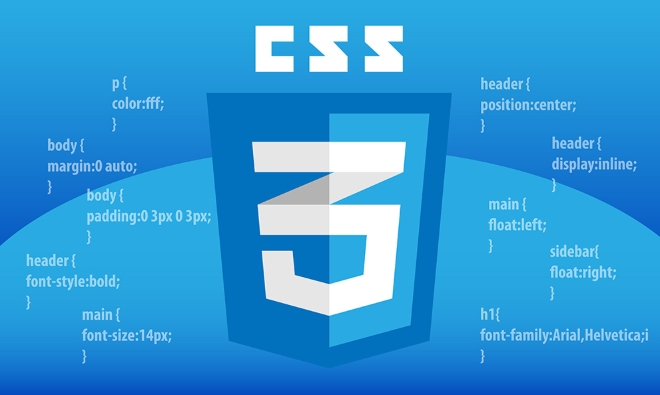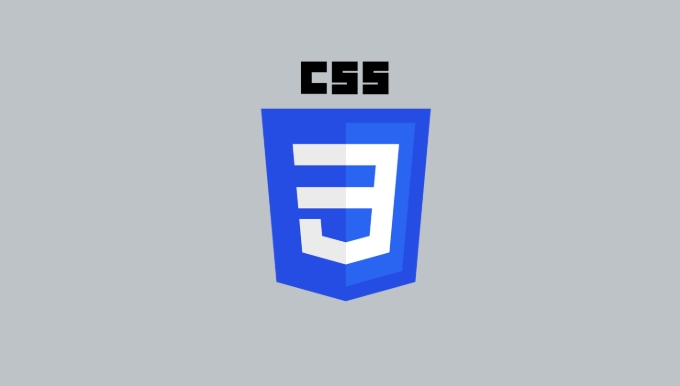To correctly load custom fonts, you need to use @font-face to declare and pay attention to format compatibility, path and CORS settings. 1. Use @font-face to define the font name, source and style; 2. Provide both .woff2 and .woff formats to ensure browser compatibility; 3. Set correct cross-domain headers to solve external loading problems; 4. Verify the font file path to avoid 404 errors; in terms of performance optimization, 5. Load the font weight as needed to reduce the request; 6. Generate a subset of fonts to reduce the volume; 7. Use font-display:swap to avoid text invisibility; Common problems include cache old files → clear cache to view, file path error → check the Network panel, inconsistent spelling → check the font-family name, character not supported → generate font packages containing commonly used Chinese characters.

Using custom CSS fonts is actually not difficult, but many people tend to ignore some key points during operation, resulting in font loading failure or website performance affected. This article mainly talks about several practical steps and precautions, so that you can use custom fonts on the web page smoothly.

How to correctly load custom fonts
To use a custom font, you must first declare the font through the @font-face rule. This rule requires you to provide information such as font name, source (URL), and font style.

@font-face {
font-family: 'MyCustomFont';
src: url('myfont.woff2') format('woff2'),
url('myfont.woff') format('woff');
font-weight: normal;
font-style: normal;
}Then you can use it like using system fonts:
body {
font-family: 'MyCustomFont', sans-serif;
}There are a few details to note:

- Format support : It is best to provide both
.woff2and.woffformats to be compatible with more browsers. - Cross-domain problem : If you load font files from other domain names, the server must set the correct CORS header.
- Path Correctness : Make sure the font file path is correct, otherwise the font will not be loaded.
Performance optimization tips for custom fonts
Although custom fonts can make the website more beautiful, if not handled properly, it will affect the page loading speed. Here are some common optimization suggestions:
- Loading on demand : Load only the word weights you need (such as 400 and 700), instead of loading all thicknesses and italics at once.
- Use Subset : If the website uses only English or a small amount of Chinese, you can generate a subset of fonts to reduce volume.
- Font loading strategy : You can consider using
font-display: swap;to avoid the problem of text invisibility.
@font-face {
font-family: 'MyCustomFont';
src: url('myfont.woff2') format('woff2');
font-weight: 400;
font-style: normal;
font-display: swap;
}In this way, even if the font has not been loaded, the browser will first display the alternate font and wait until the custom font is loaded before replacing it.
Frequently Asked Questions and Solutions
Sometimes the font doesn't seem to be effective, but it may actually be caused by the following reasons:
- The browser caches old font files → Clear cache or try to view in traceless mode
- Font file is not uploaded correctly or the path is wrong → Check the Network panel in the developer tool to see if it is 404
- Font name spelling inconsistent → Make sure
font-familyin@font-faceis exactly the same as the name when used - Some special characters are not supported → If it is Chinese, you may need to specially generate a font package containing commonly used Chinese characters.
Basically that's it. Custom fonts may seem simple, but a slight oversight in details may lead to display abnormalities or affect user experience. As long as you pay attention to the path, format, and performance, you can generally apply it smoothly.
The above is the detailed content of Implementing custom CSS fonts on a website. For more information, please follow other related articles on the PHP Chinese website!

Hot AI Tools

Undress AI Tool
Undress images for free

Undresser.AI Undress
AI-powered app for creating realistic nude photos

AI Clothes Remover
Online AI tool for removing clothes from photos.

Clothoff.io
AI clothes remover

Video Face Swap
Swap faces in any video effortlessly with our completely free AI face swap tool!

Hot Article

Hot Tools

Notepad++7.3.1
Easy-to-use and free code editor

SublimeText3 Chinese version
Chinese version, very easy to use

Zend Studio 13.0.1
Powerful PHP integrated development environment

Dreamweaver CS6
Visual web development tools

SublimeText3 Mac version
God-level code editing software (SublimeText3)

Hot Topics
 What is 'render-blocking CSS'?
Jun 24, 2025 am 12:42 AM
What is 'render-blocking CSS'?
Jun 24, 2025 am 12:42 AM
CSS blocks page rendering because browsers view inline and external CSS as key resources by default, especially with imported stylesheets, header large amounts of inline CSS, and unoptimized media query styles. 1. Extract critical CSS and embed it into HTML; 2. Delay loading non-critical CSS through JavaScript; 3. Use media attributes to optimize loading such as print styles; 4. Compress and merge CSS to reduce requests. It is recommended to use tools to extract key CSS, combine rel="preload" asynchronous loading, and use media delayed loading reasonably to avoid excessive splitting and complex script control.
 External vs. Internal CSS: What's the Best Approach?
Jun 20, 2025 am 12:45 AM
External vs. Internal CSS: What's the Best Approach?
Jun 20, 2025 am 12:45 AM
ThebestapproachforCSSdependsontheproject'sspecificneeds.Forlargerprojects,externalCSSisbetterduetomaintainabilityandreusability;forsmallerprojectsorsingle-pageapplications,internalCSSmightbemoresuitable.It'scrucialtobalanceprojectsize,performanceneed
 Does my CSS must be on lower case?
Jun 19, 2025 am 12:29 AM
Does my CSS must be on lower case?
Jun 19, 2025 am 12:29 AM
No,CSSdoesnothavetobeinlowercase.However,usinglowercaseisrecommendedfor:1)Consistencyandreadability,2)Avoidingerrorsinrelatedtechnologies,3)Potentialperformancebenefits,and4)Improvedcollaborationwithinteams.
 CSS Case Sensitivity: Understanding What Matters
Jun 20, 2025 am 12:09 AM
CSS Case Sensitivity: Understanding What Matters
Jun 20, 2025 am 12:09 AM
CSSismostlycase-insensitive,butURLsandfontfamilynamesarecase-sensitive.1)Propertiesandvalueslikecolor:red;arenotcase-sensitive.2)URLsmustmatchtheserver'scase,e.g.,/images/Logo.png.3)Fontfamilynameslike'OpenSans'mustbeexact.
 What is Autoprefixer and how does it work?
Jul 02, 2025 am 01:15 AM
What is Autoprefixer and how does it work?
Jul 02, 2025 am 01:15 AM
Autoprefixer is a tool that automatically adds vendor prefixes to CSS attributes based on the target browser scope. 1. It solves the problem of manually maintaining prefixes with errors; 2. Work through the PostCSS plug-in form, parse CSS, analyze attributes that need to be prefixed, and generate code according to configuration; 3. The usage steps include installing plug-ins, setting browserslist, and enabling them in the build process; 4. Notes include not manually adding prefixes, keeping configuration updates, prefixes not all attributes, and it is recommended to use them with the preprocessor.
 What are CSS counters?
Jun 19, 2025 am 12:34 AM
What are CSS counters?
Jun 19, 2025 am 12:34 AM
CSScounterscanautomaticallynumbersectionsandlists.1)Usecounter-resettoinitialize,counter-incrementtoincrease,andcounter()orcounters()todisplayvalues.2)CombinewithJavaScriptfordynamiccontenttoensureaccurateupdates.
 CSS: When Does Case Matter (and When Doesn't)?
Jun 19, 2025 am 12:27 AM
CSS: When Does Case Matter (and When Doesn't)?
Jun 19, 2025 am 12:27 AM
In CSS, selector and attribute names are case-sensitive, while values, named colors, URLs, and custom attributes are case-sensitive. 1. The selector and attribute names are case-insensitive, such as background-color and background-Color are the same. 2. The hexadecimal color in the value is case-sensitive, but the named color is case-sensitive, such as red and Red is invalid. 3. URLs are case sensitive and may cause file loading problems. 4. Custom properties (variables) are case sensitive, and you need to pay attention to the consistency of case when using them.
 What is the conic-gradient() function?
Jul 01, 2025 am 01:16 AM
What is the conic-gradient() function?
Jul 01, 2025 am 01:16 AM
Theconic-gradient()functioninCSScreatescirculargradientsthatrotatecolorstopsaroundacentralpoint.1.Itisidealforpiecharts,progressindicators,colorwheels,anddecorativebackgrounds.2.Itworksbydefiningcolorstopsatspecificangles,optionallystartingfromadefin






